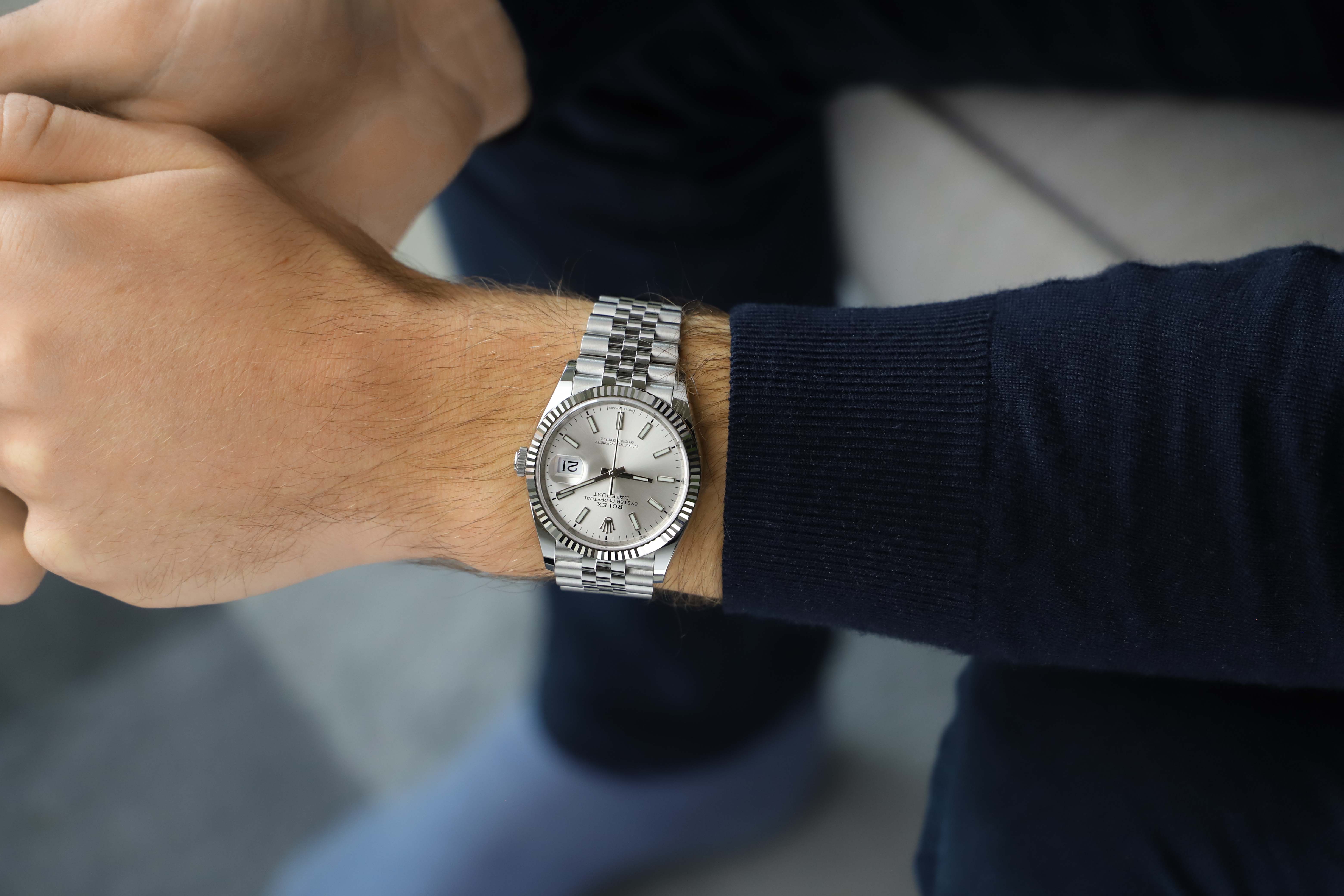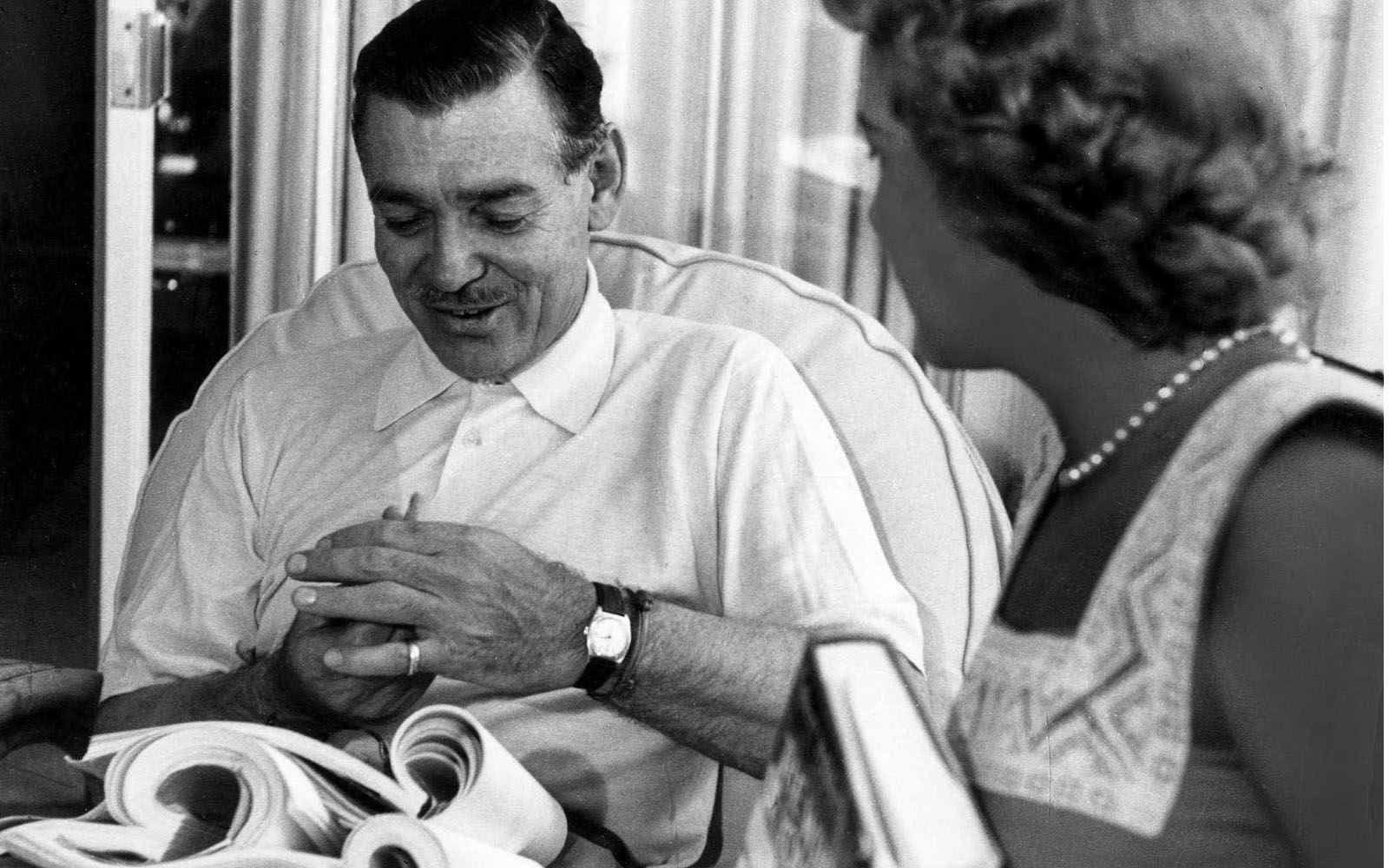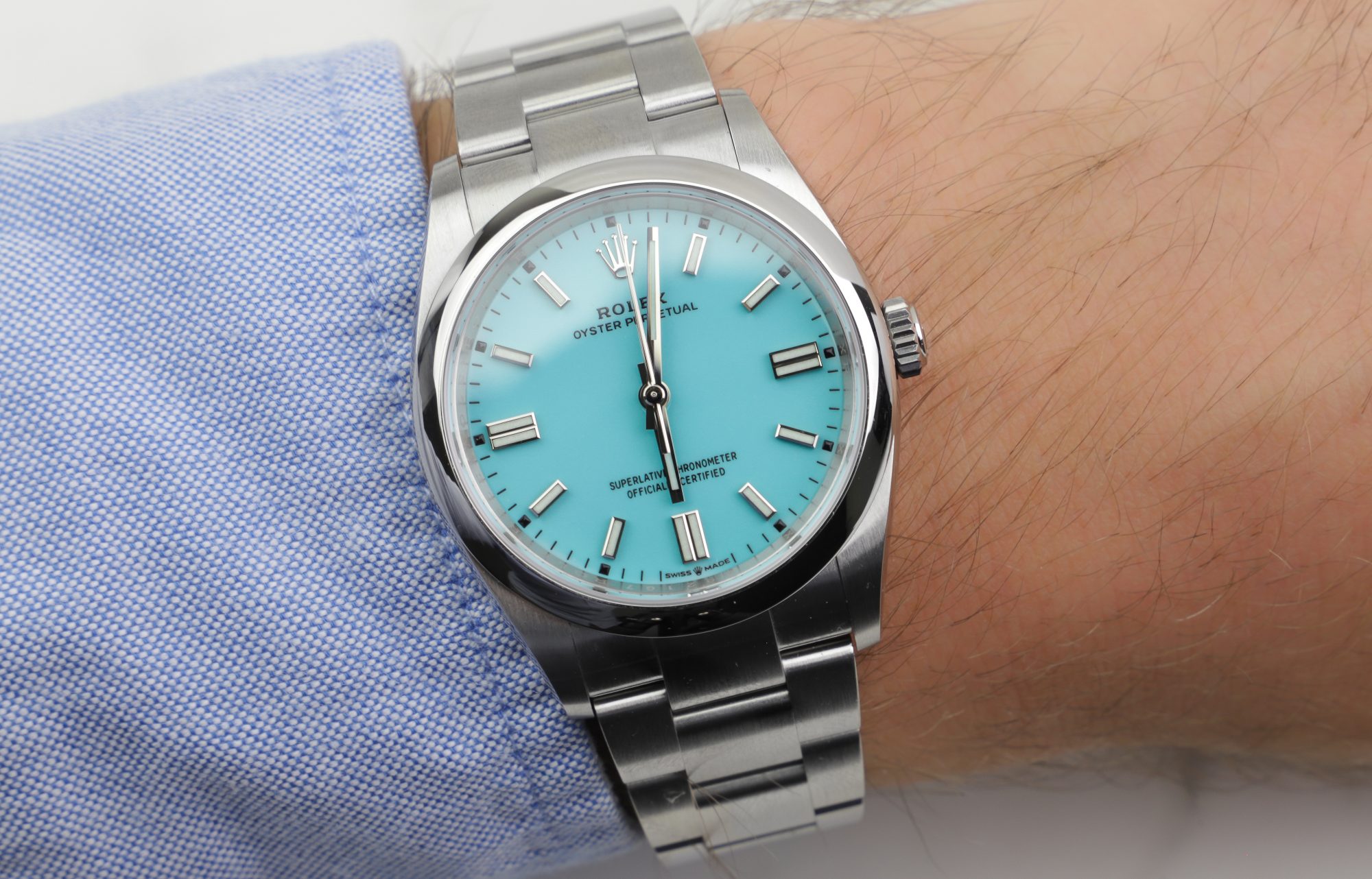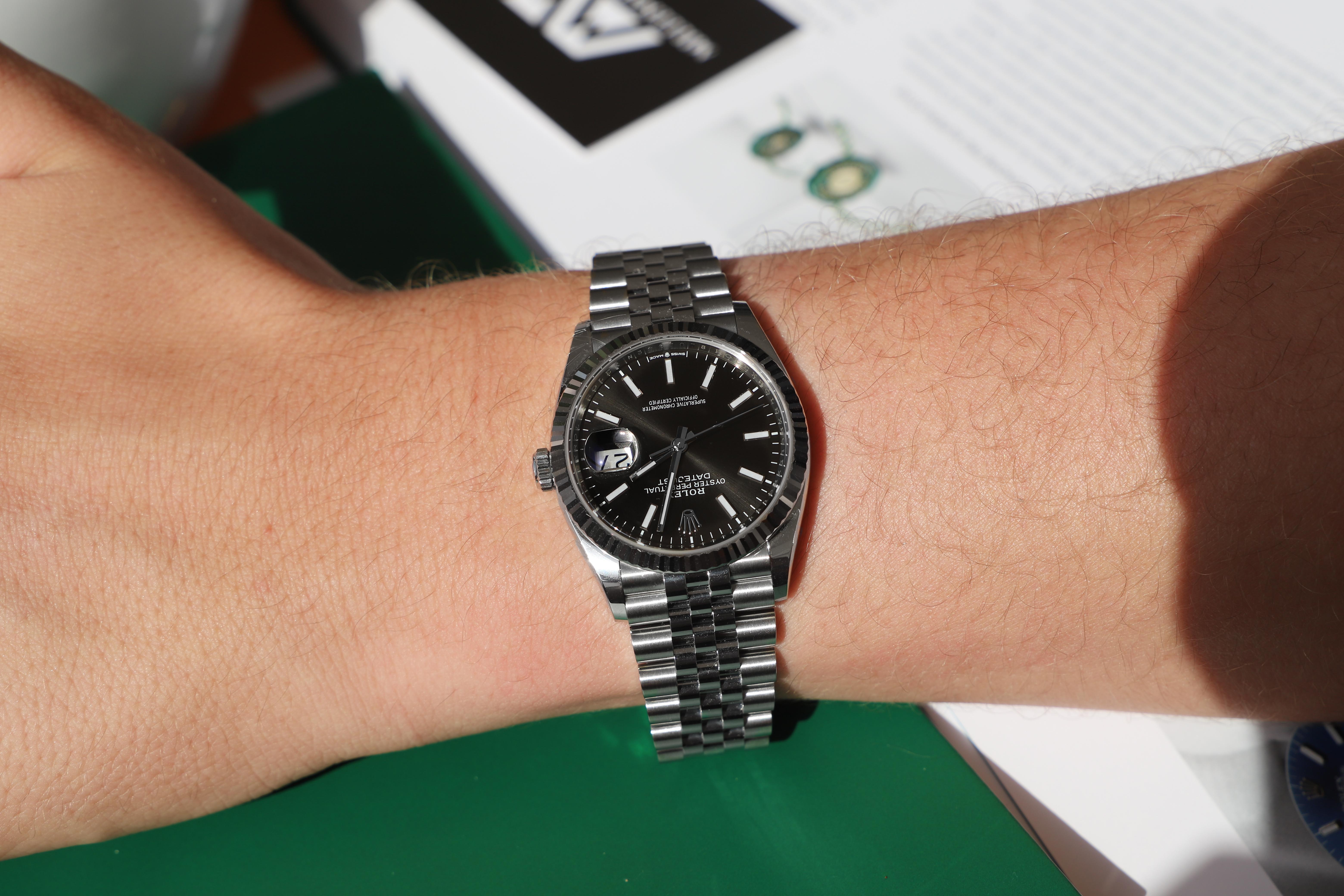
Is a 36mm Watch too Small for a Man? Men’s Watch Sizes Guide
It’s no secret that the size ideals in the watch industry have moved towards larger and larger watches over the decades.
If you look at vintage watches, or photos of when who wore watches back in the day, you’ll notice that the wristwatches from that era, say the early 1900s to 1970s, were considerably small. Men’s watches during this era were rarely more than 36mm, and most of them were smaller than that. The ideal size for a men’s watch in the early and mid-1900s was somewhere around 30-34mm depending on which decade in the history you look at.
But large or small is very much an ideal thing. It’s based on people’s perceptions and ideas of what looks good and what doesn’t. The sizes of wristwatches are to a great extent based on fashion trends, although the watch industry, in general, tends to be less agile and quick to adapt than the fashion industry.

The size ideals of watches change over time
With all of the above in mind, what is considered a large, small, or suitable men’s size has a lot to do with trends. Ultimately, there are an endless number of factors that affect trends, and what consumers look for that is a subject for a completely different article. But naturally, marketing of course plays a central role in what people perceive they should wear. Then, of course, brands also listen to what consumers want and try to serve it to them.
The fact of the matter is that the sizes that were considered “men’s watches” back in the day are to most people considered women’s watches today. Because it’s not just men’s watches that have moved towards larger watch sizes. Also, women’s watches have gotten larger over the years.
For example, it’s not uncommon to see women wearing Rolex Submariners or Daytona watches and these are 40mm! This is something that would be considered completely unthinkable back in the day.


Is a 36mm Watch too Small for a Man?
To answer this question in short, no, a 3mm watch is not too small for a man. 36mm is considered a classic watch size that can work for both men and women. But whether or not a 36mm size is suitable for you depends on several different factors such as your wrist size, style, and the type of watch.
To elaborate on the question of whether or not a 36mm watch is too small for a man, it’s important to have some context to the question. If we answer this question from a historical standpoint, no 36mm is certainly not too small for men. In fact, in the 1940s, 36mm watches were on the higher end of the size spectrum. Many men at the time chose smaller sizes than 36mm.
But today, the size ideals for men’s watches look a lot different than they did back in the day. If you look at what sizes are being offered by watch brands, most men’s watches are larger than 36mm. Today, 40mm is considered the standard size for men’s watches.
It was in around the 1950s that more and more men’s watches started to be made in 36mm. Many of the men’s watches released at this time were made in 36mm and became the preferred choice for many men. In 1945, Rolex released the Datejust. The first watch to be released in this new collection was the reference 4467 and this was made in 36mm. In 1956, Rolex presented the Day-Date and this too was made in 36mm.

During this time, there was clearly a shift toward larger watches that both the market and the watch brands moved towards.
What we can say is that today, 36mm still remains a classic men’s size. Rolex still makes the Datejust and the Day-Date in 36mm and they refer to it as a “classic size”, which it is from a historical standpoint. At the same time, Rolex has broadened its offerings and made both of these models in larger sizes in more recent decades. That way, they can cater to those who prefer something classic, and those who prefer watches with more modern size ideals.
Ultimately, the ideal size of a watch comes down to personal taste and preference. Some people like to have a watch that offers some heft to the wrist, whilst others prefer that a watch is small and more discreet on the wrist. But the bottom line is that there’s absolutely nothing wrong with a men’s watch that is 36mm. In fact, they still appeal to a large number of men, and will likely continue to do so for many decades to come.

Wrist size and type of watch
Two of the most important factors that will influence the importance of the watch size are your wrist size and the type of watch you have.
In general, smaller watches tend to lead to a more classic and refined appearance, thus making them more suitable for formal and preppy occasions. Still to this day, 36mm is considered the ideal size amongst many for dress watches. Dress watches are meant to be discreet and not steal the show, so for these occasions, you don’t want something big and clumsy on the wrist. This is why 36m is often a perfect size for a dress watch – and why many watch brands make their dress watches 36mm, even though it has become more and more common to create larger dress watches in recent decades.
On the contrary, if we are talking about sports watches, it’s a different story. Sports watches need to be bulky, robust, and durable. And for these purposes, a larger watch often makes sense. Moreover, a small sports watch may also risk looking a bit out of place as the size is classic, paired with what is supposed to be a sporty and masculine timepiece.

Furthermore, we also have the factor of wrist size which is important to take into the equation. For men who have large wrists, a 36mm watch risks looking tiny and out of place on the wrist. Therefore, the answer in this instance would be that yes, a 36mm watch is too small. At the same time, there are a lot of men with small wrists, and for these individuals, a big watch will risk looking equally awkward on their wrists. So in that sense, it’s important to factor in the wrist size when talking about watch sizes.
In fact, some women may have larger wrists than some men, so from that perspective, it would not be strange for them to opt for a 36mm watch which has historically been a men’s size but is today more of a unisex size in many instances.
Size ideals today
Today, most men’s watches are between 39 and 44mm. These are considered the go-to sizes for men’s wristwatches. At the same time, 36mm still retains a classic status, and Rolex, being the traditional company it is, still holds the 36mm close to its heart. In general, the 36mm men’s watches that are being made today are elegant dress watches as it tends to be a much more appropriate size for this type of watch rather than for sports watches.
Whilst the trend of watch sizes for men has moved towards larger watches in the last couple of decades, we’re now seeing a shift in the size ideals. Some manufacturers are actually moving against the trend and making more watches in smaller sizes. However, this is actually not against the trend of the market because more and more men have actually started to find the appeal of smaller watches.

Since watch sizes are just like any trend – it changes over time, it can actually go the opposite. Whilst watches have gotten larger in the last couple of decades, there’s nothing that says that the market and trends can move towards smaller watches in the future. And based on our analysis, we’re actually seeing signs that this has started to happen. And if you ask us, we believe that we’ll see more of this in the future. And whilst we don’t think we’ll go back to the time when just over 30mm was considered an ideal size for men’s watches, it’s possible that 36mm will become the go-to size for a lot of men in the decades to come.
The fashion industry in particular is a very interesting one because trends in the fashion industry tend to disappear and then return decades later. Take bootcut jeans or skinny jeans to mention two examples. Or the large women’s suits with wide-shoulder jackets, for that matter.





Very interesting! What do you think about the Tissot Seastar 36mm, in fact it is a diver watch, Not too small to be diver?
Hi,
Yes, the Tissot Seastar 36mm is certainly a diver. As a matter of fact, the size of the watch has very little to do with the properties of a dive watch (although modern dive watches have moved in the direction of being larger).
Bear in mind that back in the day, dive watches were a lot smaller than they are today.
Kind regards,
Millenary Watches
I just bought the Seastar 36mm for my girlfriend.
I own a couple of 36mm watches homage to the Rolex DJ/DD and both look good on my hand, but the Seastar 36 is definitely a ladies watch for me, unless you have extremely tiny hand. Try it in person before deciding. Very good design and built quality for the price, though.
I found this article while researching pics of the Breitling Chronomat 36. It looks fine but is a little bit smaller visually than the Rolex models because of the shorter lugs. The 38 looks perfect on me but it is only with Diamonds and is more flashy (and expensive). The 40 looks great on me but with a Diver watch feel – it is bulkier.
Hi,
Thanks for sharing your thoughts!
Historically, 36mm has been a men’s size. But the trend has moved towards larger watches and as a result, 36mm is now regarded as unisex.
Kind regards,
Millenary Watches